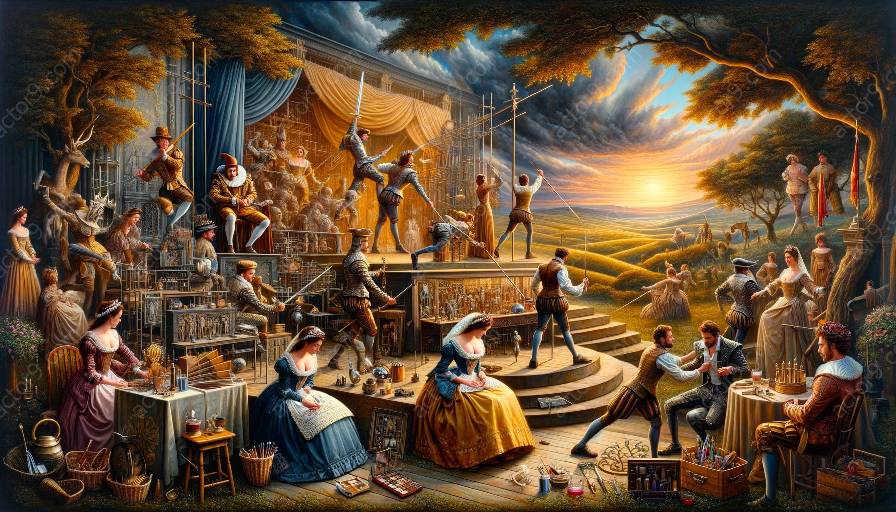Shakespearean performances are known for their rich narratives and captivating storytelling, and props play a vital role in enhancing the theatrical experience. In this article, we delve into the ways in which props aid in storytelling and narrative in the context of Shakespearean performance.
The Historical Context of Props in Shakespearean Performance
During Shakespeare's time, theatrical performances relied heavily on the effective use of props to convey setting, action, and thematic elements. The use of props was essential for creating a visual and sensory experience for the audience, as elaborate sets and special effects were limited. Props served as crucial tools for actors to immerse themselves in their characters and engage the audience.
Enhancing the Atmosphere and Setting
Props play a significant role in establishing the atmosphere and setting of a Shakespearean performance. From swords and crowns to goblets and parchments, the careful selection and use of props help transport the audience to the world of the play. For instance, a royal scepter or a dagger can instantly communicate power dynamics and plot developments, enriching the narrative and reinforcing the thematic elements of the story.
Symbolism and Visual Metaphors
Props in Shakespearean performances often serve as visual metaphors and symbolic representations of key themes and motifs. The use of symbolic props, such as flowers, mirrors, or poison, adds layers of meaning to the storytelling, allowing the audience to interpret the narrative on a deeper level. These props become extensions of the characters' emotions and intentions, contributing to the overall impact of the performance.
Facilitating Character Development
Props aid in the development of characters by providing tangible elements that actors can interact with. The way in which a character handles a prop can convey subtle nuances of their personality, motivations, and relationships with other characters. Whether it's a letter, a piece of jewelry, or a weapon, props become integral to the actor's physical expression, adding depth to the characters and their interactions.
Engaging the Audience
Props serve as visual stimuli that captivate the audience's attention and imagination. When used thoughtfully, props can draw the audience into the world of the play, making the storytelling more immersive and compelling. By creating a sensory experience that goes beyond dialogue and action, props contribute to the overall impact and memorability of Shakespearean performances.
Conclusion
Props are indispensable elements in the art of Shakespearean performance, contributing to the visual, emotional, and narrative dimensions of the storytelling. From their historical significance to their role in character development and symbolism, props add layers of meaning and impact to the theatrical experience. Understanding the ways in which props aid in storytelling and narrative in Shakespearean performances offers valuable insights into the craft of theatrical production and the enduring power of Shakespeare's works.

























